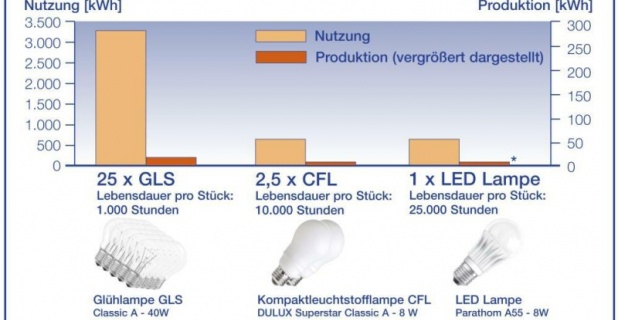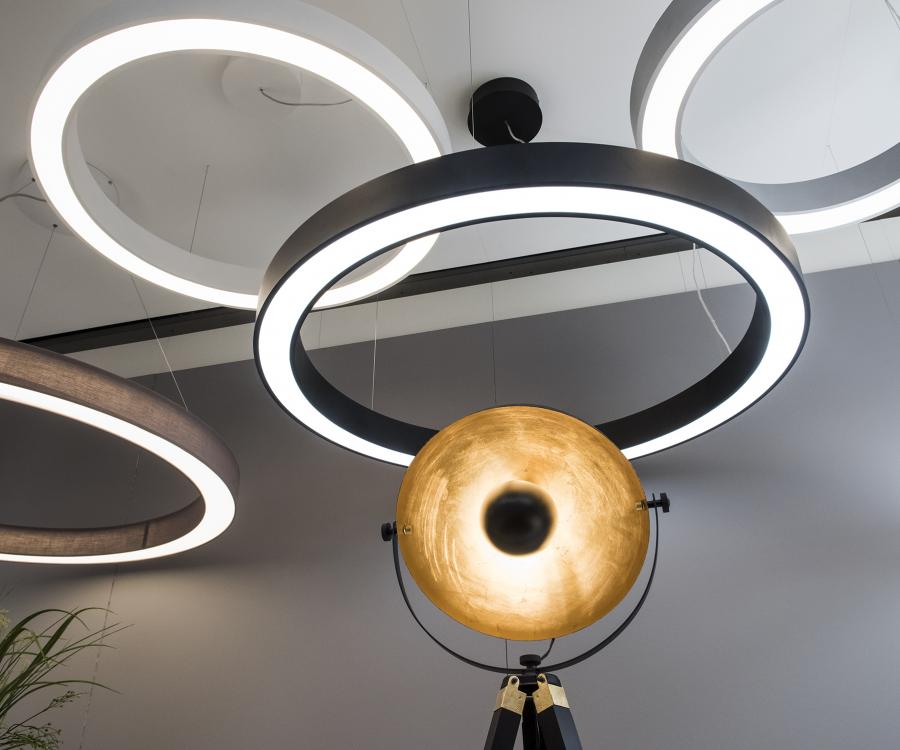A study on the life-cycle assessment (LCA) of LED lamps by OSRAM shows the latest generation of lamps achieves a very high score for environmental friendliness. This study involved a close look at their entire life-cycle – how much energy and raw materials the lamp consumes in terms of production, use and disposal and the environmental impact involved in the process. The result was that today’s LED lamps achieve the LCA values of compact fluorescent lights and are far superior to conventional incandescent lamps.
In order to evaluate lamps and how they actually deal with energy and resources, it is not enough just to consider energy consumption while they are in use. The aim of OSRAM Opto Semiconductors’ LCA is therefore to analyse the environmental impact of an LED lamp over its entire life and to compare it with a compact fluorescent lamp and an incandescent lamp. The relevant material and energy supplies were determined in detail for all the LED lamp’s components and production processes. Apart from a detailed analysis of each individual production stage, for LED chips and lamp housings, for example, these also include all necessary transports such as the transport of an LED lamp from its production site in China to its place of installation in Europe.
Apart from direct input of raw materials, the energy input, materials and emissions associated with the retrieval of resources are recorded. The results allow for conclusions not only on resource consumption and primary energy input but also acidification, eutrophication, the greenhouse effect, ozone depletion and toxicity.
The bottom line is that LED are efficient
In the first LCA, OSRAM Opto Semiconductors show that LED lamps are a genuine alternative to incandescent lamps, even when considering the cumulative energy input and environmental factors.
Often these fundamentally different lamps were compared based on their wattage. Conventional lamps with filaments are way behind diode lamps. A 40 Watt incandescent lamp, for example, can either be replaced by an 8W compact fluorescent light or, for some applications, by an 8W LED lamp, which means an energy saving of 80 percent.
In order to guarantee the comparability of results in the LCA, a lifetime of 25,000 hours was chosen as reference. The latest LED lamp generation (Parathom Classic A55 with Golden Dragon Plus LED) achieves precisely this rating. Therefore, 25 incandescent lamps (OSRAM Classic A 40W) with a lifetime of 1,000 hours and 2.5 fluorescent lamps (Dulux Superstar Classic A 8W) lasting 10,000 hours have to be used for a comparison.
Over 98 percent of the energy used to produce light
The study was done in collaboration with experts at Siemens Corporate Technology, Centre for Eco Innovations and shows that similar to compact fluorescent lamps with LED-based lamps over 98% of the energy used is consumed to generate light. Less than two percent is allocated to production. This has dismissed any concern that manufacturing of LED particularly might be very energy-intensive. In contrast to the primary energy consumption of incandescent lamps of around 3,300kWh, LED lamps use less than 700kWh. The bottom line is that LED lamps are therefore definitely more efficient than conventional incandescent lamps. Apart from this, the ratings that indicate the lamps’ effects on the environment are consistently better than those for incandescent lamps. As the efficiency of LED continues to increase, LED lamps will be capable of achieving even better LCA results in future. Three independent experts are currently verifying the findings of the internal study. A summary of the study will be available in October at www.osram-os.com/life-cycle-assessment.










